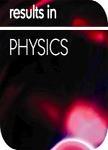版权所有:内蒙古大学图书馆 技术提供:维普资讯• 智图
内蒙古自治区呼和浩特市赛罕区大学西街235号 邮编: 010021

作者机构:FutureChem Co Ltd 21 Gwanjeodong RoYeonmujang 3 Gil Seoul South Korea Gachon Univ Coll Hlth Sci Dept Radiol Sci 191 Hambakmoero Incheon South Korea
出 版 物:《RESULTS IN PHYSICS》 (物理结果)
年 卷 期:2018年第10卷
页 面:348-352页
核心收录:
学科分类:07[理学] 0805[工学-材料科学与工程(可授工学、理学学位)] 0702[理学-物理学]
基 金:National Research Foundation of Korea [NRF-2016R1D1A1B03930357]
主 题:Nondestructive testing (NDT) High-energy industrial X-ray system Total variation (TV) approach Noise reduction algorithm Quantitative evaluation of image performance
摘 要:Over the past years, many studies have evaluated the performance of nondestructive testing high-energy X-ray imaging methods. In these high-energy industrial X-ray imaging systems, the noise is very important when accurately assessing the nondestructive analysis of faults inside the object volume. A common way to improve the noise performance is the total variation (TV) noise reduction algorithm. Thus, the purpose of this study is to establish a high-energy industrial X-ray imaging system using 450 kVp energy and to confirm the feasibility of our designed TV noise reduction algorithm. We used an X-ray generator (including source, power supply, and cooler) and a flat panel detector made of an amorphous silicon material. In addition, we acquired the X-ray image for a battery and an air pump and then applied our designed TV noise reduction algorithm to these images. To evaluate the image performance, we used normalized noise power spectrum (NNPS), contrast to noise ratio (CNR), and coefficient of variation (COV). According to the NNPS result, the noise performance of our method was improved compared to conventional noise reduction methods. In addition, the CNR of our TV noise reduction algorithm was 1.58, 1.30, and 1.26 times greater than that achieved for the noisy image, median filter and Wiener filter, respectively. We also acquired excellent COV results for the high-energy X-ray imaging system (about 1.93 times higher than that of the noisy image). Our results suggest that a TV noise reduction algorithm can be constructed with an improved image performance in high-energy industrial X-ray imaging systems.